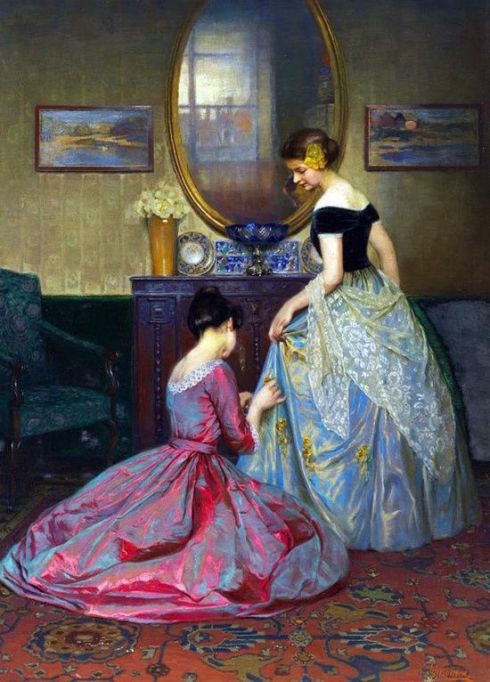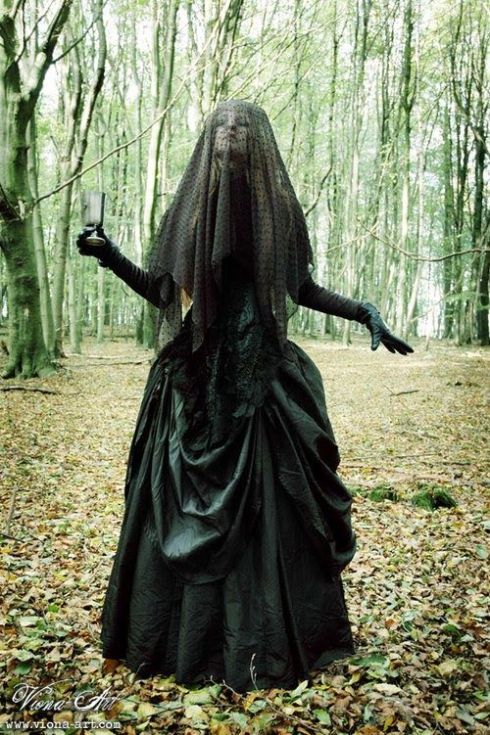In every age there’s an artist who captures the spirit of the times and gives a voice to the generation. In the 1980s, posters of The Smith and their lead man Morrissey graced the walls of teenage bedrooms. Had the custom been around a century and a half earlier, teenage girls would probably put pictures of Lord Byron, Keats and Shelley above their beds in their exceedingly elegant Regency-era bedrooms. In the post-revolutionary and newly industrialised world, Romantic poets sang of beauty, love, nature and death, while at the same time living lives of rebellion, much to the dismay of the bourgeois class. Likewise, in the eighties which were a difficult decade for idealists*, in the era of Thatcherism, recession and miners’ strikes, pop music was an escape and individuals such as Morrissey intentionally detached themselves from the political instabilities by moving their focus to introspection and individual struggles and singing of loneliness in the nightclubs, ill-fated relationships, home town claustrophobia, dullness of everyday life, and a strong longing for death. More than a century and a half divides the poets of Romanticism and Morrissey, and yet the same melancholy, introspectiveness, ideals and views on death connect them.

I love this black and white picture of The Smiths with pink letters; it’s the perfect aesthetic for the band’s music and lyrics, or at least the way I see it – pink rose petals and a grey sky, promises and disappointments, wittiness and misery, shyness, idealism and memories…
Romantics and Death
A Lament
“O World! O Life! O Time!
On whose last steps I climb,
Trembling at that where I had stood before;
When will return the glory of your prime?
No more -Oh, never more!
Out of the day and night
A joy has taken flight:
Fresh spring, and summer, and winter hoar
Move my faint heart with grief, but with delight
No more -Oh, never more!”
When I say Romantics, I will focus on the second generation of English Romantics or the “groovy trio” which consisted of Lord Byron, Percy Bysshe Shelley and John Keats; all three died very young in tragic circumstances, all cherished beauty in their poetry, used elaborate language, showed interest in the Classical world and Mediterranean countries, all three saw poetry as a challenge because its reward is the immortality itself; through the verses, the poet lives, long after the frail human body becomes tired from life. I will focus on Percy Shelley in particular, and then Keats, because I feel that Shelley and Morrissey have a lot in common but about that later on.
 Source: Romantics who have ruined my life.
Source: Romantics who have ruined my life.
Percy Shelley; the rebel, the idealist, a ferocious promoter of free love, non-violence, atheism and vegetarianism, a young man with an insatiable hunger for knowledge who spent up to sixteen hours a day reading, at the same time attending only one lecture while at Oxford, an act which by itself carries a rebellious massage; conventions and formal education mean nothing to me. Elopements and self-pity are his forte. Suicides and unrequited loves followed him like a shadow. He was no stranger to romantic encounters at graveyards at night which irresistibly reminds me of The Smiths song “Cemetery Gates”; when Shelley and Mary proclaimed their love for each other at her mother’s grave in St Pancras Churchyard on 26th June 1814, did Shelley say: “Dear Mary, meet me at the cemetery gates… I’ll bestow a kiss upon thy sweet lips above your mother’s grave in a quiet nocturnal hour when the distant church bells announce midnight.”
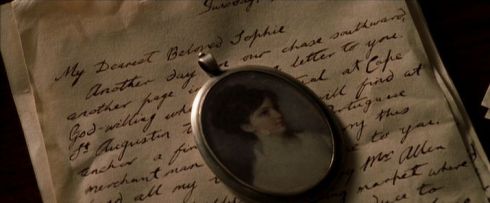
In times when he met Mary, Shelley was bored with his wife Harriet (women seem to bore him easily) and he was eagerly longing for an intellectual female companionship. And Mary was a lonely teenage girl with a wild imagination; the two were a perfect match, although soon Mary bored him too. Shelley quickly abandoned Harriet, their baby daughter and their unborn child, and accused Harriet of marrying him for money.
Is he a hippie lad from the sunny South Kensington clad from head to toe in the latest groovy gear from Granny Takes a Trip? No, he is a poet, and his verses speaks of romantic rebellion, exalted and idealistic belief in the triumph of love and liberty, at the same time inviting the reader to act upon social justice as well as believing in the indestructible nature of beauty. His poems appear to be either manifestos of his political views, which were socialist and verged on anarchy; sweet and innocent verses on love, moonbeam, kisses, roses and larks; or deep, profound, honest longing for death and sighing on the idea of transience and passing of everything.
 Elle Fanning as Mary Shelley
Elle Fanning as Mary Shelley
Shelley was morbidly obsessed with death; he saw it as a state of perfection, and for his self-pitying personality, it seemed to offer an alternative to the mundaneness and despairs of life – death promises all the sweet delights and mysterious, dark, ethereal pleasures that life denies us. Death equals dreams, peace, perfection and happiness. Death is mystical, otherworldly; it is an escape from all miseries.
“I fall upon the thorns of life! I bleed!”
Shelley’s verse above, from his poem “Ode to the Westwind”, best illustrates his view on his own life, or human life in general. He often sets his poems in an autumnal setting, in days when one feels transience the most; nature is dying slowly, vibrantly, richly, lushly, in colours of ruby and amber; in the most beautiful way. The poem shows Shelley’s view of nature as carrying both the strength of destruction and creation for after the death in autumn, a new life awakens in spring. Likewise, after death, one awakens in another world, a better world. Here are verses from Shelley’s “Hymn to Intellectual Beauty” which speak of the unique beauty of autumn:
“The day becomes more solemn and serene
When noon is past–there is a harmony
In autumn, and a lustre in its sky,
Which through the summer is not heard or seen,
As if it could not be, as if it had not been!”

I feel that Shelley was ruled by or tormented by two different moods, a victim of which I am myself, and they are evident in his poetry. There’s one mood when he is in darkest thoughts, drowning, not in alcohol, but in self-pity, despair and melancholy, overindulging in his miserable existence, seeing himself as a martyr, deeply and honestly longing for death, so much so that you can imagine him sighing at the moon and just thinking “I want to die…” This is the mood that produced his poems such as “A Lament”, “Death” and “Mutability”. Then there is another mood, one which is responsible for his best poems, lyrically and stylistically, such as “Ode to the Westwind” or “The Indian Serenade”: a passionate, lyrical, imaginative mood when he is especially sensitive toward beauty that surrounds him, and often very gentle too, writing verses sweeter than cotton-candy such as these:
“I fear thy kisses, gentle maiden;
Thou needest not fear mine;
My spirit is too deeply laden
Ever to burden thine.
I fear thy mien, thy tones, thy motion;
Thou needest not fear mine;
Innocent is the heart’s devotion
With which I worship thine.”

Even in “The Indian Serenade”, he has that passionate and theatrical flair proclaiming “I die! I faint! I fail!”:
“Oh lift me from the grass!
I die! I faint! I fail!
Let thy love in kisses rain
On my lips and eyelids pale.
My cheek is cold and white, alas!
My heart beats loud and fast;
Oh press it close to thine again,
Where it will break at last!”


For Shelley, life is either a thorn which brings pain, or the lush rose blossom in whose velvety sweetness he wishes to be drowned; life is either a “dim vast vale of tears” (Hymn to Intellectual Beauty) or a “silver vision” (Alastor; or the Spirit of Solitude)*. At times, his idealistic spirit seems indomitable, his fight for justice, his passion for defending his ideas, thoughts and world views seem so ardent and strong, and yet, other times, his verses witness nothing but defeatism and despair, and in such times he feels this death-urge strongly and wishes, like Rimbaud, to “fall into nothingness”.
In some moments, I feel, verses of Shelley and Morrissey carry the same bittersweet, spiritless, yet charming mood. For example, when Morrissey sings “I really don’t know and I really don’t care” in the song Hand in Glove, it is that same careless, low-spirited, verging on pathetic, no-one-understands-me and have-pity-for-me mood that possessed Shelley rather often. And then, when he grabbed a quill and a piece of paper to gather his thoughts and wrote his poem “Invocation to Misery”, did he really mean “Heaven Knows I’m Miserable Now”? I’m sure he did. Also, the voice of calm resignation in which Morrissey sings “I’ll probably never see you again!” in the song Hand in Glove reminds me so much of Shelley’s cute lyrical moaning “No more, oh never more!”
Although a century and a half divides their artistic periods, I feel that Shelley and Morrissey are philosophical equals. They were both vegetarians who promoted non-violence; both were very self-indulgent in terms of allowing themselves to spent days drowned in self-pity, melancholy and negativism, let’s say that “being miserable” could be considered their hobby; both exercised a certain idealistic version of “purity” of some sort; Shelley by abstaining from alcohol and Morrissey being celibate, both have that unswayable obsession with death and see it in the most romantic, glamorous terms. But again, this is just my opinion.

In his poem “On Death”, Shelley deals with the subject directly, again death as bringing us mortals into an otherworldly place, a place that no one can visit and return to tell, a place which will forever be covered with thousand veils of mystery:
“(…) When all that we know, or feel, or see,
Shall pass like an unreal mystery.
The secret things of the grave are there,
Where all but this frame must surely be,
Though the fine-wrought eye and the wondrous ear
No longer will live, to hear or to see
All that is great and all that is strange
In the boundless realm of unending change.
Who telleth a tale of unspeaking death?
Who lifteth the veil of what is to come?
Who painteth the shadows that are beneath
The wide-winding caves of the peopled tomb?
Or uniteth the hopes of what shall be
With the fears and the love for that which we see?”
 Poppies by: Nataliya Kalinina.
Poppies by: Nataliya Kalinina.
Shelley continues this romantic vision of death as a state equalling sleep and dreams in his poem “Mont Blanc” whose main theme, though, is again the sublime power of nature, it’s the highest mountain in Europe, and for the second generation of Romantics nature has what man can only long for, but will never possess: eternity or immortality.
“Some say that gleams of a remoter world
Visit the soul in sleep,-that death is slumber,
And that its shapes the busy thoughts outnumber
Of those who wake and live. -I look on high;
Has some unknown omnipotence unfurled
The veil of life and death? or do I lie
In dream, and does the mightier world of sleep
Spread far and round and inaccessibly
Its circles?….”
Equalling death with dreams brings me to the wonderful flower often connected to dreams and sleep: poppy – its bright red colour speaks of passion, while the delicate petals whisper of fragility. Shelley used opium for relief, and so did another Romanticist, Edgar Allan Poe who said: “Sleep, those little slices of death — how I loathe them.”

Both Shelley and his wife Mary were interested in the supernatural, and Mary, as we all know, later wrote Frankenstein. But Shelley too shows his fascination with the otherworldly creatures in “Hymn to Intellectual Beauty”:
“While yet a boy I sought for ghosts, and sped
Through many a listening chamber, cave and ruin,
And starlight wood, with fearful steps pursuing
Hopes of high talk with the departed dead.”
 Here are Shelley’s wonderful verses written by the hand of Richey Edwards, the great lyricist of the Manic Street Preachers, a set list for their show at the Glasgow Barrowlands, on October 15, 1994, found here. It’s not Morrissey per se, but it certainly links Romanticism with rock music.
Here are Shelley’s wonderful verses written by the hand of Richey Edwards, the great lyricist of the Manic Street Preachers, a set list for their show at the Glasgow Barrowlands, on October 15, 1994, found here. It’s not Morrissey per se, but it certainly links Romanticism with rock music.
Still, there were moments when Shelley was faced by death and mortality in real life, not just in imagination. First, there was the sad death of Fanny Imlay in October 1816, the half-sister of Mary Shelley and the out-of-wedlock daughter of Mary Wollstonecraft, who travelled to Swansea in Wales and overdosed on laudanum in an inn; the always quiet, sombre and modest twenty-two year old Fanny was secretly in love with Shelley and she was heartbroken when he eloped with Mary. When Shelley heard of her death and the reason, he composed these poignant verses:
“Her voice did quiver as we parted,
Yet knew I not that heart was broken
From which it came, and I departed
Heeding not the words then spoken.
Misery—O Misery,
This world is all too wide for thee.“
Then, in December 1816, his first wife Harriet was found drowned in a lake in Hyde Park in London, the reason was not Shelley but her death finally enabled him to make Mary Mrs Shelley. And then, the youngest and the first of the three beautiful blossoms of Romanticism to wither, John Keats, died on the 23th February 1821. This occasion inspired Shelley to write his poem “Adonais”, in which he states: “No more let life divide what death can join together.”

Even though I’ve focused on Shelley because he is my favourite Romantic poet and his lyrical vision is the most similar to Morrissey’s, my musing on death in Romantic poetry wouldn’t really be complete without mentioning this beautiful poem by John Keats:
“Can death be sleep, when life is but a dream,
And scenes of bliss pass as a phantom by?
The transient pleasures as a vision seem,
And yet we think the greatest pain’s to die.
How strange it is that man on earth should roam,
And lead a life of woe, but not forsake
His rugged path; nor dare he view alone
His future doom which is but to awake.”
_____________________________________________________________________________
Morrissey and Death
“I’m bereft of spiritual solutions. I do believe that there has to be a better world, but that’s rather simple. I’m quite obsessed with death. I’ve gone through periods of intense envy for people who’ve died. Yes, I have a dramatic unswayable unavoidable obsession with death. I can remember being obsessed with it from the age of eight and I often wondered whether it was quite a natural inbuilt emotion for people who’re destined to take their own lives, that they recognise it and begin to study it. If there was a magical beautiful pill that one could take that would retire you from this world, I think I would take it and I suppose that’s the extremity of the obsessiveness.” (From “Stop me if you’ve heard this one before”, interview by Len Brown in NME (20th February 1988)
Ah, Morrissey, a man so adored by the misfits in the eighties as well as now, and a man for whom the general public has such an ardent hatred; that is something I am unable to comprehend for I think he is simply a charming man or a handsome devil, as you wish. Maybe the general dislike lies in the fact that he himself doesn’t like people, that he seems to look through the society’s hypocrisies, and he says what he means and that’s not a quality people like. Whether you like the charming persona of the “son and heir of a shyness that is criminally vulgar” or you’d prefer to think that he is the “son and heir to nothing in particular”; you’d have to agree that their music is just damn good, their melodies are cheerful and whimsical, they are simply magical.
It was his lyrical vision, along with Marr’s wonderful musical contribution, that made The Smiths immortal. No one knows what it’s like to be an outsider better than Morrissey, and certainly no one sang about it better than he did. Here’s a quote from a book about Pulp called “Uncommon” by Owen Hatherley describing a situation which you can just translate to Morrissey’s teenage years: “What Pulp had in common most of all with the lineage outlined at the start of this introduction was a certain ‘vengeful self-creation’; the sense that they, like Bowie, Bryan Ferry, Siouxsie Sioux, David Sylvia, Morrissey, Richey Edwards or countless legions of bored suburban stars who never made it into the spotlight, had spent their lives transforming themselves into characters, with countless hours in their terrace, semi of tower-block bedrooms devoted to achieving the exact conjunction that would make them unique, and that they could then use as a weapon against a world that had already wronged them beyond forgiveness.”
On those rare occasions when my thoughts go on like this “Hmm, wouldn’t it be nice to be normal and have a friend and go out, and do whatever it is normal, sociable people do?”, I just go and listen to a few songs by The Smiths and Morrissey’s brilliant, at turns haunting, melancholic, poignant or witty, but always gorgeous lyrics such as: “Under the iron bridge we kissed“, “No, I’ve never had a job because I’m too shy“, “Hills are alive with celibate cries“, “I’ve lost my faith in womanhood“, “and though I walk home alone my faith in love is still devout“, and I laugh at my own silly thoughts. To have a social life, why – I have books. To have a real friend, why – I have a mirror.
Morrissey’s lyrics have made me feel like I belonged, like I don’t need anyone or anything as long as I hear their music. And when he proclaimed: “Throw you homework onto the fire, come out and find the one that you love and who loves you“: that’s exactly what I did on many occasions; who has time for homework when there’s evenings to be spent listening to The Smiths and dancing a lonely dance with flowers because they’re all I have. I know exactly how he felt as a teenager, oh how I do. Welcome to Morrissey’s world, shaped by the years of loneliness in his small bedroom with posters of James Dean, days spent reading Oscar Wilde, walking the grey suburban streets with dull red-brick houses that linger on and on, watching kitchen sink dramas and listening to sixties pop stars and New York Dolls. Being happy and sociable is passé and being miserable is tres chic.
Just like Shelley’s, the lyrics of The Smiths, all written by Morrissey, are a glamorous beautiful mix of lyricism and self-pity, bittersweet verses of irony filled with longings and rejections at the same time, wanting to belong and arrogantly showing the world the middle finger, his music was “so intoxicatingly melancholic, so dangerously thoughtful, so seductively funny that it lured its listeners, most of whom were not really damned, just slightly cursed, into a relationship with him and his music instead of the world. The Pop Pied Piper knows that life doesn’t imitate great art, it is destroyed by it.“*
Smiths 1984 De Montfort Hall
Look at those gorgeous red carnations that he’s swaying about, from whose garden did he snatch them, I wonder?
If you don’t want to die, go and read Oscar Wilde, or be charming and wear flowers in your pocket after listening to The Smiths, that you haven’t really listened to them. Well, maybe their music awakens other desires in you, but you are soulless and heartless if it leaves you feeling nothing. Their first album, called The Smiths (1984) is the best example of those gorgeous, witty, bedroom-years inspired lyrics which speak of “the passions and preoccupations that consumed Morrissey for years, alone in his darkened bedroom“*, and these lines, despite being from the third album, pondering on life and death, can serve to illustrate the mood – the mood I am engulfed in majority of my time:
“And when I’m lying in my bed
I think about life
and I think about death
and neither one particularly appeals to me.” (Nowhere Fast)
“I’m not happy and I’m not sad” and “neither life nor death appeal to me”; how outrageously gorgeous is this ambivalent attitude towards such important matters?! Life or death, happiness or sadness, whatever, I dunno…

Death, yearning for death because you’re depressed, miserable in a humdrum town where rain falls hard all the time, rejected, unloved, tired, disappointed, and the graveyard seems a more exciting place than your bedroom, or simply because, in a manner of Oscar Wilde, it’s an aesthetically alluring idea, and to die for love, beauty or mere boredom is just original, romantic and glamorous. Wilde said himself that “The artistic life is one long lovely suicide.”
When Morrissey says: “If there was a magical beautiful pill that one could take that would retire you from this world, I think I would take it…” My thoughts exactly! The manner in which Shelley and Morrissey see death is vastly different from the way people who really take their own lives see it. Shelley and Morrissey’s view on death is not seriously depressed or suicidal, but rather “artistic”, deeply romantic and idealistic view of death as something mystical, glamorous, as a dream, and dreams are better than reality. I think it’ i that constant discord between beautiful and sad, magical and mundane aspects of life that drives the imagination to devise an escape from the prison cell of life, to fantasise about something different, something better, and sometimes all these longings turn into melancholy and an obsession for death. Death is the last step, the fulfilled longing; and only death can make beauty immortal. No other theme is greater than love, beauty and death combined.
And speaking of beauty: “To this day, there are precious few Smith songs that can’t mist my vision … Not because they are “sad” or “miserable”, but because they are so unutterably, unfeasibly, unlawfully handsome. Which is the deadliest drug of all. If ever there was a proof that Keats’ assertion “Beauty is truth, truth beauty” is anything more than just a trite line or simply wishful thinking, it is in The Smiths.”*
Morrissey and yellow daffodils, I love a man with flowers! Morrissey waving a bouquet of gladioli on the Top of the Pops performing This Charming Man must be the coolest thing ever! I also love something that Morrissey said in 1984 when interviewed by kids, when one boy asked “Why do you hold flowers when you sing?”, Morrissey gave a wonderful reply: “Why do I hold flowers?… I think flowers are beautiful things. Very nice and innocent things. They don’t harm anybody. They don’t burp and they don’t do anything ugly. So, why not, it’s better, I think, than waving socks about.”
In his book “Dark Stuff”, Nick Kent called Marianne Fatihfull “Morrissey’s first love”, and in this interview when she was just 21 years old her view on death is as romantic as it can get, she says; “I love death!… I feel it’s important to stay in the world and do things, but on the other hand death and dreams are another thing. I’d really like to go there… into death. But it’s wrong to make your own death, death is when you get it. I think it’s a beautiful thing, death, such a relief, just imagine if there wasn’t any death….”

And now some of Morrissey verses that deal with death:
What She Said
“What she said:
“How come someone hasn’t noticed
that I’m dead
and decided to bury me
God knows, I’m ready”
What she said was sad
but then, all the rejections she’s had
to pretend to be happy
could only be idiocy
What she said was not for the job or
lover that she never had.”
That Joke Isn’t Funny Anymore
“….time’s tide will smother you
and I will too
when you laugh about people who feel so
very lonely
their only desire is to die (…)
well, it suddenly struck me
I just might die with a smile on my
face after all.”

Well I Wonder
“Well I wonder
do you see me when we pass?
I half-die
Please keep me in mind
please keep me in mind
Gasping – but somehow still alive
this is the fierce last stand of all I am
Gasping – dying – but somehow still alive
this is the final stand of all I am
Please keep me in mind”
 Madame Bovary (1991)
Madame Bovary (1991)
How Soon Is Now
“There’s a club if you’d like to go
you could meet somebody who really loves you
so you go, and you stand on your own
and you leave on your own
and you go home, and you cry
and you want to die…”

Song Cemetery Gates always reminds me the Gothic romance of Percy and Mary Shelley and their graveyard meeting, always. And there’s also the mention of Keats and Wilde, that’s cool too:
“A dreaded sunny day
So I meet you at the cemetery gates
Keats and Yeats are on your side
While Wilde is on mine
So we go inside and we gravely read the stones
All those people all those lives
Where are they now?
With the loves and hates
And passions just like mine
They were born
And then they lived and then they died
Seems so unfair
And I want to cry.”
 John William Waterhouse, Miranda – The Tempest, 1916
John William Waterhouse, Miranda – The Tempest, 1916
The haunting beginning of the song I Know It’s Over reminds me of Edgar Allan Poe’s stories of people buried alive. What a spooky picture for the imagination; to feel the soil falling over your head….
“Oh mother, I can feel the soil falling over my head
See, the sea wants to take me
The knife wants to slit me
Do you think you can help me?….
Oh Mother, I can feel the soil falling over my head
Oh Mother, I can feel the soil falling over my head
Oh Mother, I can feel the soil falling over my head
Oh Mother, I can feel the soil falling over my head
Oh Mother, I can feel the soil falling over my head”
 John William Waterhouse, Sleep and his Half-brother Death, 1874
John William Waterhouse, Sleep and his Half-brother Death, 1874
Don’t listen to this one, Asleep, if you’re feeling depressed and vulnerable to begin with:
“Sing me to sleep
Sing me to sleep
I’m tired and I
I want to go to bed
Sing me to sleep
Sing me to sleep
And then leave me alone
Don’t try to wake me in the morning
‘Cause I will be gone
Don’t feel bad for me
I want you to know
Deep in the cell of my heart
I will feel so glad to go
(…)
There is another world
There is a better world
Well, there must be
Well, there must be
Well, there must be
Well, there must be
Well…Bye bye
Bye bye
Bye…“
Queen cover image with model wearing a nightdress by Angela Gore. Photographed by John Hedgecoe. Scanned by Miss Peelpants from Queen, 17th July 1968.
Shakespeare’s Sister
“Young bones groan
And the rocks below say :
“Throw your skinny body down, son!”
But I’m going to meet the one I love
So please don’t stand in my way
Because I’m going to meet the one I love“

Pre-Raphaelite painting by John Everett Millais is perhaps the most beautiful, most romantically idealised depiction of someone dying in the art history, and Morrissey’s lyrics of the song There Is A Light That Never Goes Out are possibly the most romantic and glamorous vision of death and love combined:
“And if a double-decker bus
Crashes in to us
To die by your side
Is such a heavenly way to die
And if a ten ton truck
Kills the both of us
To die by your side
Well the pleasure, the privilege is mine”
And here’s another quote from the same book which just perfectly describes the feeling you get from listening to The Smiths:
“He cooed in my ear that, yes, adolescence, like the Smiths and pop music, might be a moment that passes, that one day you might be laughing and dancing and finally living, but that feeling of aloneness and the bittersweet prospect of a life of disappointment stretching out before you (…) is the purest, truest, noblest feeling you will ever have.“*
Apart from dealing with the subject of death in his lyrics, you can take this post as a certain “Ode to Morrissey” too because there is no other person from popular culture that I can relate to more strongly. A few days ago, I spent an amazing afternoon listening to all albums by The Smiths in a chronological order, absolutely fantastic way to waste an afternoon, fully recommend it. Also, I am neither a girl of Romanticism nor a teenager of the 1980s, and yet I have pictures of both Shelley and Morrissey on my wall; what can I say, I love charming men! So, let us all walk around with flowers and kindness, read books, be charming and die… from beauty!
_________
* Mark Simpson, Saint Morrissey: A Portrait of This Charming Man by an Alarming Fan
Tags: 1980s, 19th century, Beauty, boredom, carnation, charming, Death, death in art, death in poetry, dreams, England, English Romanticism, flowers, Graveyard, handsome, How Soon Is Now, I know it's over, John Keats, Keats, loneliness, lonely, love, Manchester, Marianne Faithfull, Mary Shelley, Melancholy, Morbid, Morrissey, Percy Bysshe Shelley, Poem, Poetry, Poppy, Rock Music, Romanticism, sad, Sadness, Saint Morrissey, Shakespeare's Sister, Shelley, sleep, song, suicide, There is a light that never goes out, This Charming Man, transience

























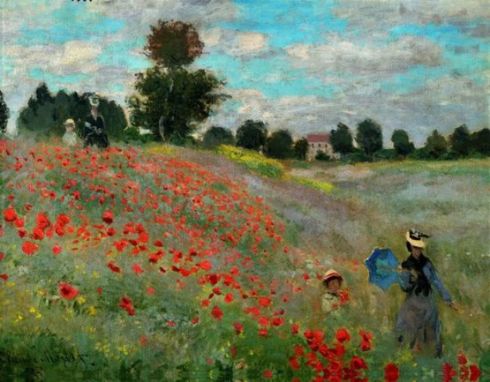


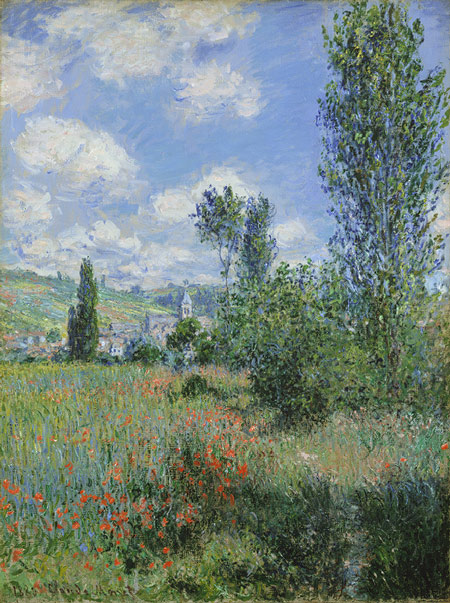



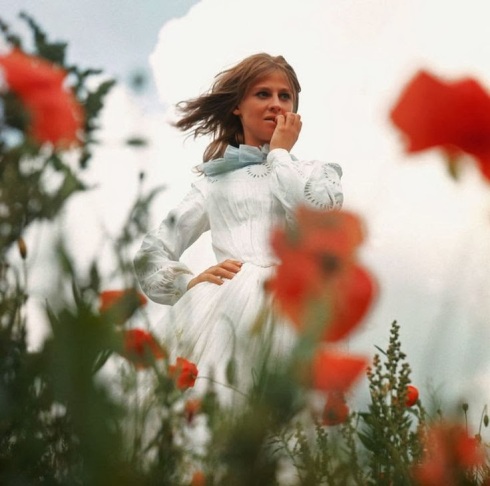



.jpg)







































